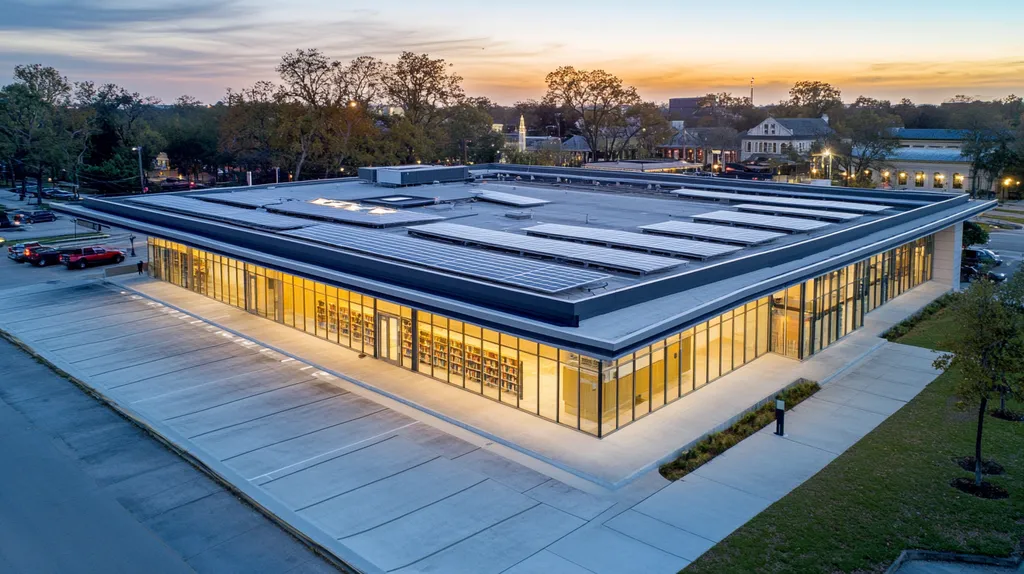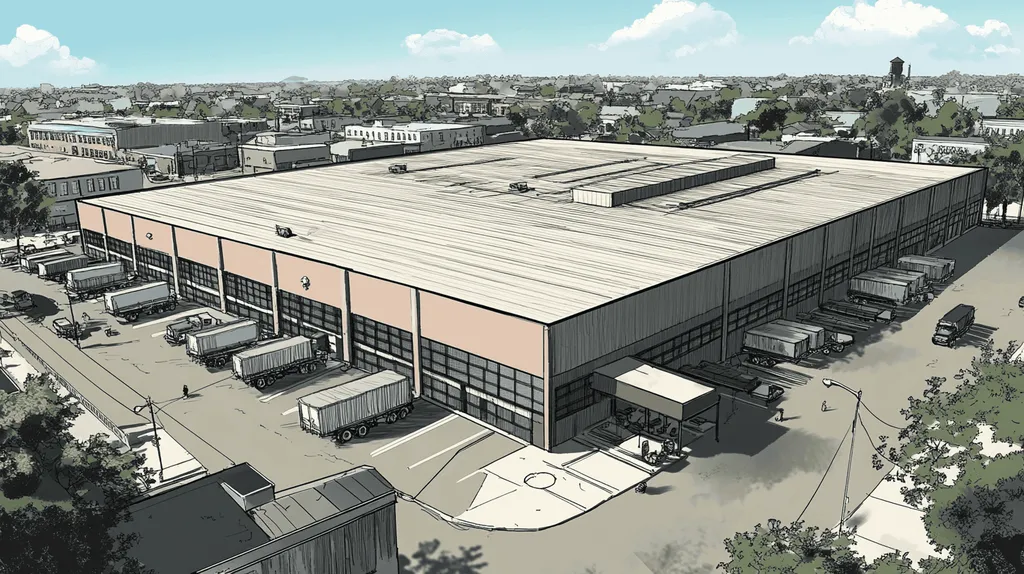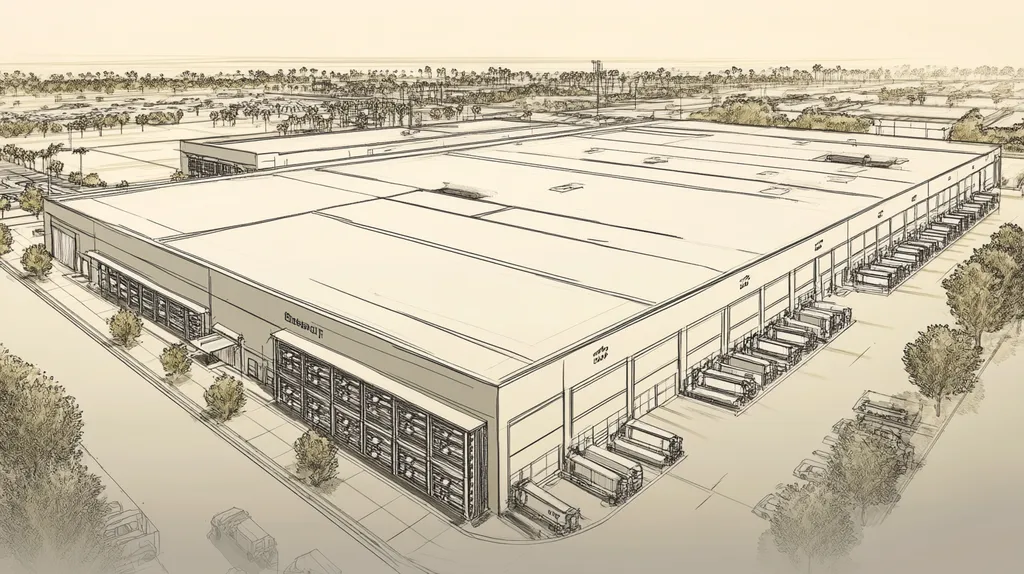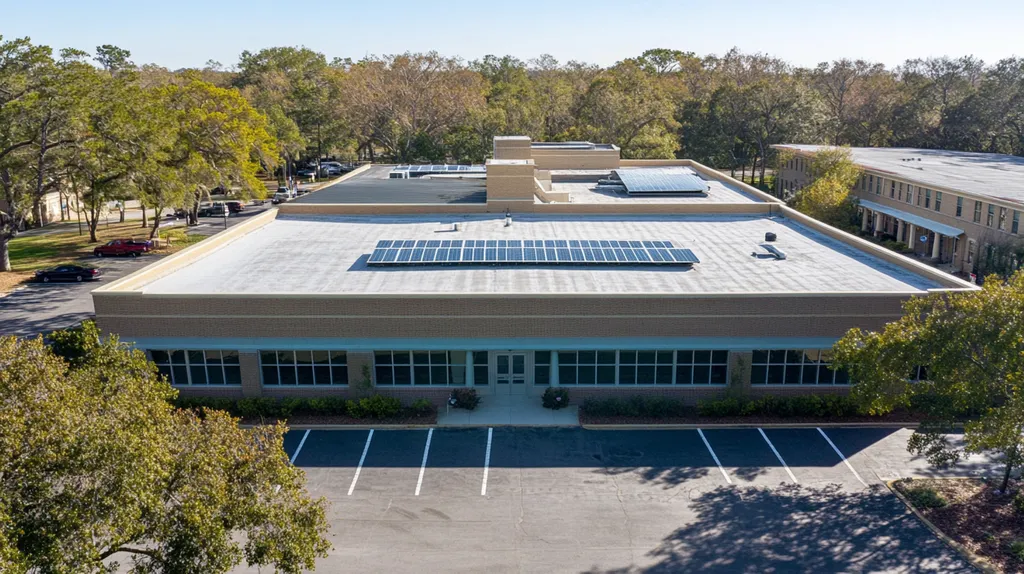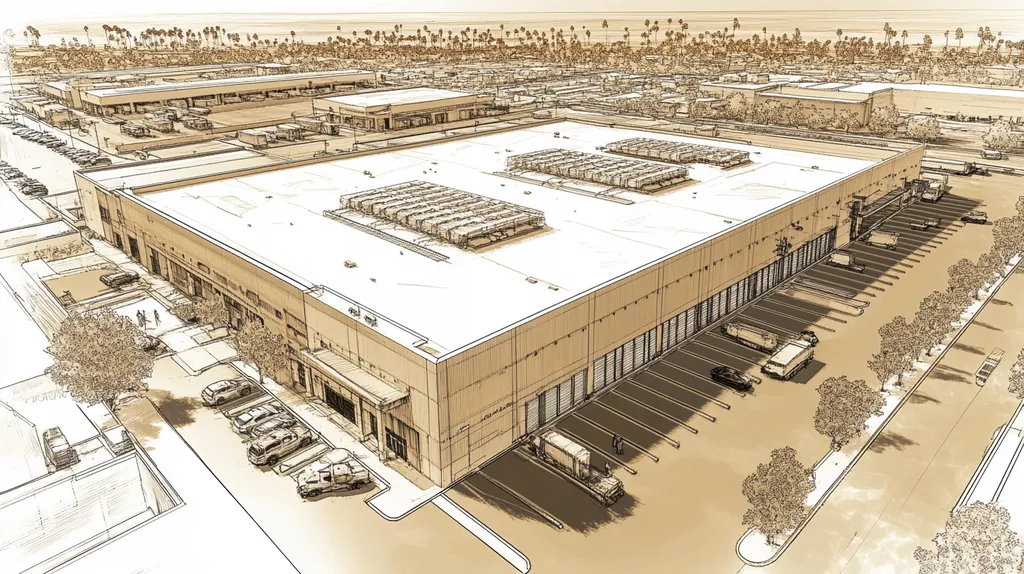Welcome to today’s Battle Royale featuring two roofing heavyweights: “TPO” in the east corner versus “PVC” in the west!
Tonight’s showdown pits these contenders against each other across six punishing rounds designed to test every aspect of their performance for climate influence on membrane type for industrial roofs.
At stake? Millions in potential costs, decades of building protection, and the critical performance demands of modern commercial and industrial facilities.
Our professional judging panel will evaluate each round on technical merit, real-world performance, and value delivery. After all six rounds, we’ll declare our ultimate champion.
Ladies and gentlemen, facility managers and building owners… it’s time to rumble!
ROUND 1: INITIAL COSTS & INSTALLATION
When selecting a roofing membrane for industrial facilities, initial costs and installation considerations can make or break a project’s success. Every dollar spent on roofing impacts the overall facility budget, while installation challenges can lead to costly delays and operational disruptions. In today’s competitive market, understanding the financial implications of TPO versus PVC membranes has become crucial for property owners seeking to maximize their return on investment.
Material Expenses
In the battle of material costs, TPO and PVC membranes present distinctly different investment levels for industrial facilities. TPO materials typically cost 30-40% less than comparable PVC options, making them particularly attractive for projects with tight budget constraints.
TPO’s lower price point stems from simpler manufacturing processes and more widely available raw materials. Current market prices range from $2.50 to $5.00 per square foot for TPO, providing significant upfront savings.
PVC membranes command premium pricing, usually between $4.50 and $8.00 per square foot, due to their enhanced chemical resistance and durability features. This higher initial investment often reflects PVC’s advanced formulation and superior weathering characteristics.
In regions with intense UV exposure, both membrane types offer excellent reflective properties that help reduce energy costs. (source: Solaria Solar and Roofing)
TPO earns the clear “ADVANTAGE” in material expenses due to its significantly lower upfront costs.
Installation Complexity
Installation complexity directly affects labor costs and project timelines, making it a critical consideration for facility managers. TPO membranes feature straightforward installation procedures that require less specialized training for roofing crews.
The simplified TPO installation process typically involves fewer steps and more forgiving welding requirements. This reduction in complexity translates to lower labor costs and decreased chances of installation errors.
PVC installations demand more technical expertise and precise welding techniques. The additional skill requirements often result in higher labor costs and a smaller pool of qualified installers.
For industrial facilities, TPO’s simpler installation process presents clear benefits in terms of both cost and availability of qualified contractors, earning it the “ADVANTAGE” in installation complexity.
Project Timeline
Project duration significantly impacts facility operations and overall costs. TPO installations typically proceed more quickly due to their straightforward application process and fewer technical requirements.
Most TPO projects can be completed 20-30% faster than equivalent PVC installations, minimizing disruption to facility operations. This efficiency stems from simpler welding procedures and faster cure times.
PVC installations generally require more time due to their precise welding requirements and additional quality control measures. The extended timeline can lead to longer facility disruptions and increased project management costs.
Given its faster installation speed and reduced impact on facility operations, TPO claims the “ADVANTAGE” in project timeline considerations.
Based on TPO’s advantages in material expenses, installation complexity, and project timelines, TPO emerges as the “WINNER” of Round 1.
ROUND 2: DURABILITY & LIFESPAN
The longevity of industrial roofing systems directly impacts facility operations, maintenance budgets, and environmental sustainability. With replacement costs often exceeding $250,000 for a typical commercial facility, choosing the wrong membrane can lead to premature failure and devastating financial consequences. Modern industrial facilities face increasingly unpredictable weather patterns and harsh operating conditions that test roofing systems to their limits.
Impact of Weather Extremes
Weather resistance defines a roofing membrane’s ability to maintain structural integrity and performance across diverse climate conditions. Temperature fluctuations, UV exposure, and precipitation patterns create unique challenges that directly affect membrane longevity.
TPO membranes excel in high-temperature environments, offering superior UV resistance and heat reflection properties. These characteristics help maintain consistent performance even under intense solar exposure, reducing thermal stress and preventing premature aging.
PVC membranes demonstrate exceptional stability in cold climates, maintaining flexibility and resisting brittleness at low temperatures. However, they may show accelerated wear in regions with extreme heat cycles.
For overall weather resistance, TPO claims the “ADVANTAGE” due to its superior performance across a broader range of climate conditions.
Chemical Resistance
Industrial environments often expose roofing systems to harsh chemicals, pollutants, and atmospheric contaminants. A membrane’s ability to resist these agents directly influences its service life and protection capabilities.
TPO membranes offer moderate chemical resistance but may show vulnerability to certain industrial solvents and oils. This limitation can necessitate more frequent maintenance or repairs in facilities with high chemical exposure.
PVC membranes demonstrate superior resistance to chemicals, oils, and industrial pollutants. This enhanced protection makes them particularly valuable for manufacturing facilities, laboratories, and processing plants.
PVC earns the clear “ADVANTAGE” in chemical resistance due to its superior formulation and proven track record in challenging industrial environments.
Maintenance and Repair
The ease and effectiveness of maintenance and repairs significantly impact a roofing system’s total cost of ownership. Regular upkeep can extend service life while minimizing the risk of catastrophic failures.
TPO membranes typically require less frequent maintenance due to their inherent durability and resistance to environmental factors. Their homogeneous composition allows for effective repairs when needed.
PVC membranes demand more regular inspection and maintenance to ensure optimal performance. However, they offer excellent repair capabilities through heat welding, ensuring strong, reliable fixes when damage occurs.
Given its lower maintenance requirements and good repairability, TPO claims the “ADVANTAGE” in this category.
ROUND 2 WINNER: TPO
ROUND 3: PERFORMANCE FACTORS
Performance factors in industrial roofing directly impact operational costs, energy efficiency, and long-term facility protection. With energy costs rising by double digits annually and extreme weather events becoming more frequent, choosing the right roofing membrane has never been more critical. Modern industrial facilities must balance immediate performance needs with long-term sustainability goals while protecting millions in equipment and inventory.
Durability Against Climate Challenges
Climate resilience determines how well a roofing membrane maintains its protective properties under varying weather conditions. Regional factors like temperature swings, UV exposure, and precipitation patterns create unique challenges that test membrane integrity.
TPO membranes demonstrate excellent heat resistance and UV reflection properties, making them particularly effective in warm climates. However, they can become brittle in extreme cold and may show accelerated aging in areas with dramatic temperature fluctuations.
PVC membranes maintain exceptional flexibility across a broader temperature range and resist degradation from both UV exposure and temperature cycling. Their superior chemical composition provides better protection against acid rain and industrial pollutants.
PVC claims the ADVANTAGE in durability due to its superior performance across diverse climate conditions.
Energy Efficiency and Insulation
Energy performance significantly impacts facility operating costs and environmental footprint. Modern industrial facilities face increasing pressure to reduce energy consumption while maintaining optimal interior conditions.
TPO membranes feature highly reflective surfaces that maintain their solar reflectance index (SRI) over time. This characteristic helps reduce cooling loads by up to 30% in warm climates, providing substantial energy savings.
PVC membranes also offer good reflective properties but typically show more degradation in reflectivity over time. Their thicker composition can provide better insulation value, though this benefit varies by manufacturer and installation method.
TPO earns the ADVANTAGE in energy efficiency, particularly in regions where cooling costs dominate energy expenses.
Weather Resistance Performance
Weather resistance determines how effectively a membrane withstands daily exposure to elements while maintaining its protective properties. This factor becomes increasingly important as climate patterns become more extreme and unpredictable.
TPO membranes show excellent resistance to UV radiation and heat aging but can struggle with repeated freeze-thaw cycles. Their performance in hail events varies significantly based on membrane thickness and substrate preparation.
PVC membranes demonstrate superior resistance to environmental stresses, including excellent performance during hail events and extreme temperature swings. Their enhanced formulation provides better protection against water pooling and ice formation.
PVC gains the ADVANTAGE in weather resistance due to its superior all-weather performance capabilities.
ROUND 3 WINNER: PVC
ROUND 4: MAINTENANCE REQUIREMENTS
Proper maintenance can extend an industrial roof’s lifespan by up to 50%, yet many facilities struggle with deteriorating roofing systems due to inadequate upkeep protocols. With replacement costs often exceeding $500,000 for large industrial facilities, the wrong maintenance approach can lead to catastrophic failures and operational shutdowns. Modern roofing systems demand strategic maintenance planning that accounts for both immediate needs and long-term performance requirements.
Inspection Requirements
Regular inspections form the foundation of effective roofing maintenance programs. TPO membranes typically require quarterly inspections in the first year, focusing on seam integrity and surface wear patterns that could compromise system performance.
These inspections must carefully evaluate TPO’s vulnerability to mechanical damage and potential chemical exposure, particularly in industrial environments. Special attention must focus on areas around HVAC units and other rooftop equipment where foot traffic and maintenance activities occur frequently.
PVC systems generally need only semi-annual inspections due to their superior chemical resistance and durability. Their enhanced formulation provides better resistance to ponding water and industrial pollutants, reducing the frequency of required checks.
Given its reduced inspection requirements and superior durability, PVC claims the “ADVANTAGE” in this category.
Preventive Maintenance Costs
TPO systems require more frequent preventive maintenance interventions to maintain optimal performance. The membrane’s composition makes it more susceptible to surface degradation, necessitating regular cleaning and protective treatments.
Annual maintenance costs for TPO systems typically run 15-20% higher than PVC alternatives due to more frequent intervention requirements. These costs increase significantly in facilities with high exposure to industrial chemicals or extreme weather conditions.
PVC membranes demonstrate superior resistance to environmental factors, reducing the need for frequent maintenance interventions. Their enhanced chemical resistance and durability translate to lower annual maintenance expenses and fewer required treatments.
PVC earns the clear “ADVANTAGE” in preventive maintenance costs due to its reduced maintenance requirements and superior durability.
Repair Complexity
When repairs become necessary, TPO systems often present significant challenges. The membrane’s composition requires precise temperature control during repairs, making successful fixes more dependent on technician skill and environmental conditions.
The repair process for TPO membranes often requires more extensive preparation and careful attention to detail. This complexity can lead to longer repair times and increased labor costs, particularly in challenging weather conditions.
PVC systems offer simpler repair procedures with more reliable outcomes. Their superior weldability and consistent material properties make repairs more straightforward and durable, reducing the risk of failed repairs and subsequent damage.
Due to its superior repairability and more reliable outcomes, PVC takes the “ADVANTAGE” in repair complexity.
ROUND 4 WINNER: PVC
ROUND 5: SUSTAINABILITY CREDENTIALS
Environmental sustainability has become a critical factor in industrial roofing decisions, with mounting pressure from regulations, stakeholders, and climate imperatives. Every roofing choice now carries implications for carbon footprint, energy consumption, and waste management. With industrial facilities consuming 30% of U.S. energy usage and contributing significantly to urban heat islands, selecting the right sustainable roofing solution has never been more crucial.
Energy Efficiency
Energy efficiency in industrial roofing directly impacts both operational costs and environmental footprint. The reflective properties of roofing membranes can dramatically reduce cooling loads and energy consumption, particularly in warmer climates.
TPO membranes demonstrate excellent reflective properties, maintaining high solar reflectance indices even after years of exposure. Their surface properties can reduce roof temperatures by up to 60 degrees Fahrenheit compared to dark surfaces, significantly decreasing cooling requirements. (source: Paletz Roofing)
PVC membranes also offer good initial reflectivity but tend to show more significant degradation over time. Their performance in reducing heat absorption typically requires more frequent maintenance to maintain optimal efficiency.
Based on superior long-term reflective performance and energy reduction capabilities, TPO claims the ADVANTAGE in energy efficiency.
Recyclability and Life Cycle
The recyclability of roofing materials has become increasingly important as landfills reach capacity and disposal costs rise. End-of-life considerations now play a crucial role in sustainable building practices.
TPO membranes offer excellent recyclability potential, with manufacturers developing dedicated recycling programs. Their composition allows for easier processing and reuse in new products, reducing landfill impact.
PVC recycling faces greater challenges due to chemical additives and processing requirements. While recycling programs exist, they are less widespread and often more costly than TPO alternatives.
TPO earns the ADVANTAGE in recyclability due to its simpler recycling process and wider availability of recycling programs.
Environmental Impact
Manufacturing processes and chemical composition significantly influence a roofing membrane’s environmental impact. Modern facilities increasingly prioritize materials with lower environmental footprints throughout their lifecycle.
TPO manufacturing requires fewer harmful chemicals and produces less toxic byproducts. The membrane’s simpler chemical composition results in reduced environmental impact during production and disposal.
PVC production involves chlorine-based processes and requires additional stabilizers and plasticizers. These chemical requirements increase both manufacturing emissions and potential environmental concerns during disposal.
Given its cleaner manufacturing process and reduced chemical content, TPO claims the ADVANTAGE in environmental impact.
ROUND 5 WINNER: TPO
ROUND 6: SPECIALIZED APPLICATIONS
Industrial roofing applications face increasingly complex challenges as climate patterns shift and facility operations evolve. With specialized applications representing over 40% of commercial roofing installations, choosing the wrong membrane can result in premature failure and millions in damage to sensitive equipment and inventory. Modern industrial facilities must carefully evaluate membrane performance characteristics against their specific operational demands and environmental conditions.
Extreme Temperature Resistance
Temperature fluctuations create unique stresses on roofing systems, particularly in facilities with high-temperature processes or extreme climate exposure. Understanding membrane performance across temperature ranges is crucial for long-term system reliability.
TPO membranes demonstrate excellent performance in moderate to warm conditions but can show signs of accelerated aging when exposed to extreme heat cycles. Their performance in cold conditions remains reliable, though seam integrity requires careful monitoring.
PVC membranes excel across a broader temperature spectrum, maintaining flexibility and structural integrity from -40°F to 160°F. Their enhanced formulation provides superior resistance to thermal shock and temperature cycling.
Due to its consistent performance across extreme temperature ranges, PVC claims the “ADVANTAGE” in this category.
Moisture Exposure Management
Industrial facilities often face challenging moisture conditions from both environmental factors and operational processes. Proper moisture management prevents premature membrane degradation and protects underlying structural components.
TPO membranes provide adequate moisture resistance but can develop vulnerabilities at seams and penetrations over time. Their performance in high-humidity environments requires enhanced maintenance protocols to prevent moisture infiltration.
PVC membranes demonstrate superior resistance to standing water and continuous moisture exposure. Their hot-air welded seams maintain watertight integrity even under prolonged moisture stress.
Given its superior moisture handling capabilities, PVC earns the “ADVANTAGE” in moisture exposure management.
Chemical Exposure Protection
Industrial environments frequently expose roofing systems to harsh chemicals through air emissions, process venting, and material handling. Chemical resistance directly impacts membrane longevity and system reliability.
TPO membranes offer moderate chemical resistance but may degrade when exposed to certain industrial solvents and petrochemicals. This vulnerability can lead to premature membrane failure in chemically aggressive environments.
PVC membranes provide exceptional resistance to a broad spectrum of industrial chemicals, including acids, bases, and organic compounds. Their superior chemical stability makes them ideal for facilities with challenging chemical exposures.
PVC claims the clear “ADVANTAGE” in chemical exposure protection.
ROUND 6 WINNER: PVC
AND THE WINNER IS…
After six grueling rounds of technical analysis, with both contenders trading devastating blows across durability, performance, and sustainability metrics, we have our verdict!
In a split decision that had our judges scrutinizing every detail, PVC emerges as our heavyweight champion, claiming victory in three critical rounds: Performance Factors, Maintenance Requirements, and Specialized Applications!
PVC dominated with its superior chemical resistance, extreme temperature performance, and reduced maintenance demands. Its ability to handle specialized industrial applications while maintaining exceptional durability under harsh conditions proved decisive in this epic showdown.
However, don’t count TPO out of the fight! Its lower initial costs, faster installation times, and impressive sustainability credentials make it a formidable challenger. For facilities in moderate climates with tight budgets, TPO remains a strong contender worthy of consideration.
Remember, ladies and gentlemen: Every building faces unique challenges based on local climate conditions, operational demands, and specific property characteristics. While this analysis provides valuable insights, it cannot account for all variables. Professional consultation remains essential for selecting the optimal roofing system for your specific situation.
In the high-stakes arena of industrial roofing, true victory comes not from blindly following the champion, but from strategically matching your facility’s specific requirements with the right contender’s strengths. Choose wisely, and may your roof reign supreme!
FREQUENTLY ASKED QUESTIONS
Q. What are the initial costs of a commercial roof with TPO vs. PVC?
A. When considering material expenses, TPO membranes typically cost 30-40% less than PVC options. This cost difference can significantly impact your total facility budget, particularly for projects with tight financial constraints. A careful evaluation of both installation complexities and material prices is essential to optimize investment.
Q. How does climate affect the durability of industrial roof membranes?
A. Climate factors significantly influence roof durability. TPO excels in high-temperature environments where UV exposure is prevalent, while PVC maintains better performance in cold climates. Understanding these characteristics helps prevent premature failure and ensures longevity in your facility’s roofing system.
Q. What impact do roofing membranes have on energy efficiency for commercial roofs?
A. Energy efficiency in roofing directly affects operational costs. TPO membranes feature highly reflective surfaces, reducing cooling loads by up to 30% in warm climates. This aspect makes TPO a preferable choice for facility managers aiming to minimize energy consumption and environmental impact.
Q. How do maintenance requirements differ between TPO and PVC for industrial roofs?
A. TPO membranes typically require quarterly inspections during the initial year due to their vulnerability to environmental factors. In contrast, PVC systems only necessitate semi-annual inspections, reflecting their superior durability and resistance to various stresses, leading to reduced maintenance costs.
Q. What recycling options are available for TPO compared to PVC in roofing systems?
A. TPO membranes offer better recyclability, with manufacturers developing dedicated programs for repurposing materials. PVC faces greater challenges due to its chemical additives and processing needs, making recycling less accessible. Choosing TPO may support environmentally sustainable practices more effectively.
Q. How do TPO and PVC fair under extreme weather conditions for industrial roofs?
A. When facing extreme weather, PVC membranes excel with their flexibility and thermal stability. TPO performs well in warm climates but may struggle in extreme cold. Understanding the specific climate challenges is vital for ensuring the long-term reliability of your industrial roofing system.
Q. Why is roof membrane performance crucial for specialized applications in commercial roofing?
A. Specialized applications often face unique challenges, such as chemical exposure and extreme temperatures. Choosing the appropriate membrane for these settings prevents premature failure and protects sensitive equipment. Understanding the operational needs is essential for maximizing the longevity and performance of the roofing system.


